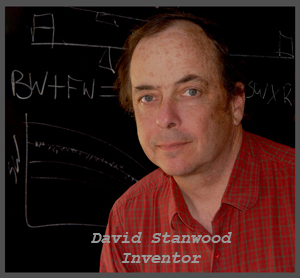
David C. Stanwood draws from a lifetime of experience in
diversified fields including:
Machine tool making, felt making, artistic photography,
professional sailing
and rigging,
and classical piano. He performs and records in his own
improvisation style of piano.
He received his degree in Photographic Science and Engineering at
Rochester Institute of Technology.
His life work began in 1978 when he received his certificate from
Piano Technology
department of the North
Bennet
St. School in Boston under William E. Garlick. At
the School, the first question he asked was "if the action doesn't
feel right what can I
do to change it?" The repeated lack of definitive answers to
this question led him to
research and develop methods for improving the feel of piano
actions. A pivotal event
in his career occurred in August of 1988, when Rudolf Serkin
tested a Model D Steinway
fitted with a prototype "improved" action. Serkin was favorably
impressed and encouraged
Stanwood to keep on his path.
Guided by evaluations of his work by top pianists, Stanwood went
on to invent the
"New Touch Weight Metrology", a new system of units and measures
that describes
how each action part contributes to the feel of the action in
terms of weight, leverage,
and friction. His the discovery of "The Equation of
Balance" opened up a whole new
field of study and practice, that of "Piano Touchweight
Technology", culminating in
the creation of Precision Touch Designtm.
His work dramatically improves the quality of restored or rebuilt
pianos and is
also used frequently to improve new pianos and makes possible the
customization of
pianos in a way that was never before possible. Hundreds of
concert pianos have been
upgraded with Precision Touch Designtm.
His work also helps in the education of music
students by improving the quality of practice pianos as well as
performance pianos
in Colleges and Universities, most notably the Cincinnati
Conservatory of Music.
His work also continues to bring great benefits to pianists who
suffer from injury or
who are in a weakened state due to health issues. Most
notably he helped the world
famous improvisation artist Keith
Jarrett when he was suffering from Chronic Fatigue
Syndrome.
His long range goal is integration of his component balancing
techniques with the
manufacture and rebuilding of pianos worldwide and the improvement
of pianos
everywhere. Another long range goal is to integrate
touch weight metrology into
the curriculum of piano technology schools across the
globe.
Stanwood volunteers a considerable amount of time to teaching in
his profession.
In October of 1990 he published "Factoring Friction with the
Balance Weight System"
in the PTG Journal. In June of 1996 he published "The New
Touchweight Metrology"
in the PTG Journal followed by a series of articles in 2000 that
layout a whole new
science within the discipline of Piano Technology.
Stanwood is frequently asked to
teach classes and seminars to piano technicians across the
continent and in Europe.
His specialty also crosses over into public school programs
were he has often been
asked to teach young students how to understand algebra using the
analogy of
a piano key as a see saw and of an algebraic formula being equal
when the see
saw is balanced.
On June 1, 2007 Stanwood was presented with the Distinguished
Alumni Award
from the North Bennet St. School for his contributions to
the craft of piano technology.
In 2009 he received the Crowl-Travis
Member of Note Award from the Piano
Technicians Guild. In 2019 he was inducted into the
Piano Technicians Guild
Hall of Fame. Click Here for the PTG Hall of Fame
Book entry.
He lives and works at his home in the Lambert's Cove
area of West Tisbury, on the
Island of Martha's Vineyard in Massachusetts.
David Stanwood Piano Innovations and inventions include:
1987
Low Inertia Jack
1990
The Balance Weight System
1990
Adjustable Friction Hammer Flange
1990
Hard Anodized Aluminum Capstan
1993
The Equation of Balance and Precision Touch Design
1998
Adjustable Wippen Support Spring - "The Miracle Whippen"
1998
Half Balance Rail bearings for changing ratio
2000
Circular Slide Rule for Calculating Balance Weight and Friction
Weight
2007
Adjustable Leverage Action
2019
The Table of Touch Design Elements
2019
SNAP! Stanwood New Action Protocol
Computer free method for balance piano actions to a desired
dynamic playing inertia level
Back to Stanwood
Piano Innovations Home Page
Created: January 8, 1996,
Last Updated: July 27, 2019
